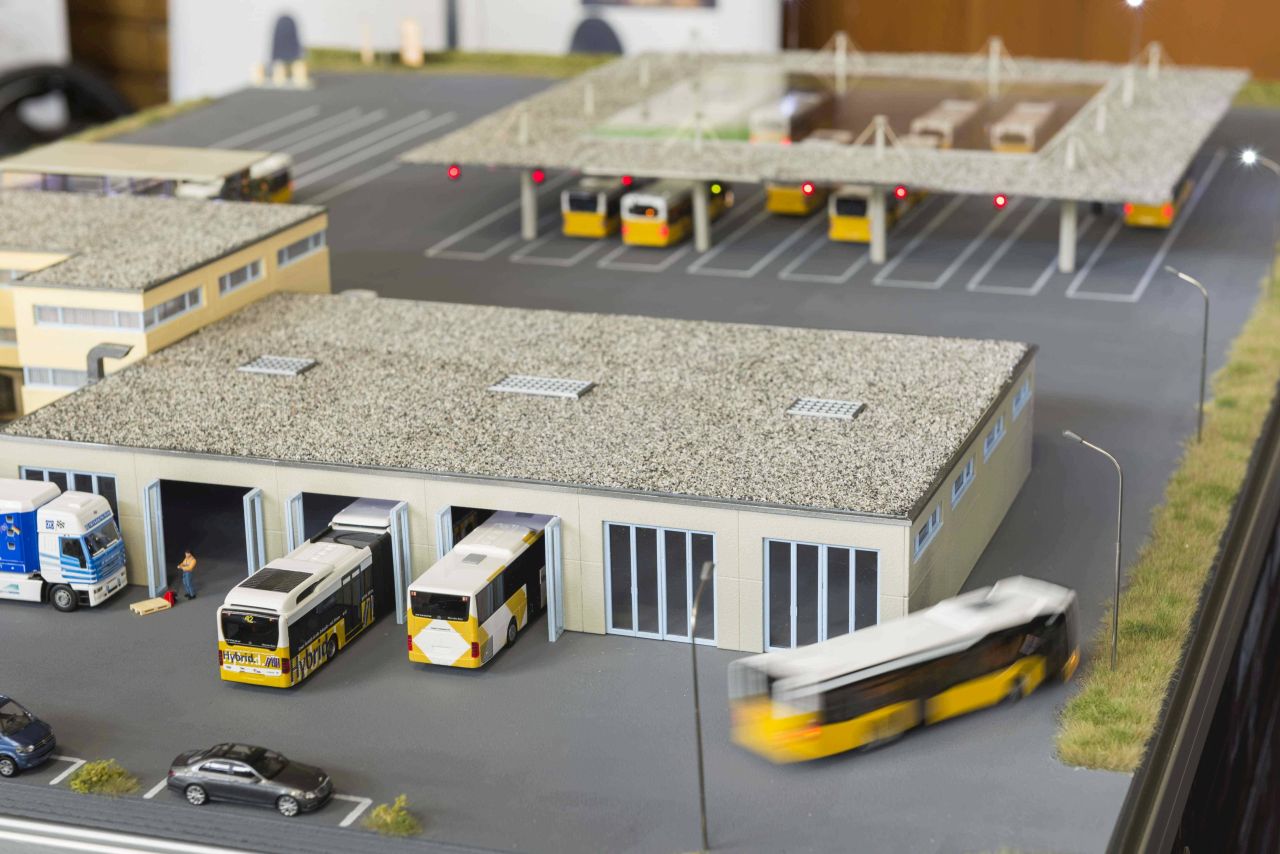Autonomous driving is an important element of new mobility concepts, not only in the private car sector. A study of Karlsruhe Institute of Technology (KIT), KIT’s Research Center for Information Technology (FZI), and Stuttgarter Straßenbahnen AG (Stuttgart Trams, SSB) now reveals how autonomous driving at bus depots can work and reduce costs. The project partners will present their model of a semi-autonomous bus depot at the EVS30 – The Electric Vehicle Symposium and Exhibition on October 09 – 11, 2017 in Stuttgart.
At a typical SSB bus depot, a public bus passes many stations until it is ready to depart again. The driver hands over the bus to workshop staff members who drive the bus to the service hall, where refueling and preliminary cleaning take place. Then, the bus is moved to the washing facility and afterwards to the repair facility. After having passed these stations, the bus is ready for being taken over by the bus driver again. “If only some of these processes were automated, the workshop staff would be free for other activities, safety could be increased, and time and costs could be reduced,” Professor Eric Sax, Head of the Institute for Information Processing Technology of KIT, says.
Together with SSB, his research team analyzed the processes at the Stuttgart-Gaisburg bus depot. They found that the drive to the washing facility, external cleaning, and the drive to the parking area as well as the parking process proper can be automated completely. Refueling, internal cleaning, and supply of the buses with pressurized air are to be taken over by industry robots in the new scenario. The drive from the handover point to the hall cannot be automated, as it is implicitly considered a test drive by the legislator.
“Our system is based on standard technologies for autonomous vehicles and compatible with the conventional road traffic infrastructure outside of the depot,” says Markus Wiedemann, Vehicle Division Manager of SSB. The challenges associated with accelerating, slowing down, and steering the buses can be mastered by equipping the buses with GPS, camera, radar, and ultrasonic systems. Processing of this information by so-called sensor fusion enables automatic lane guidance. Moreover, it must be ensured that the traffic signs, traffic lights, and marks at the depot correspond to conventional traffic infrastructure.
The semi-autonomous bus depot offers considerable economic potential: In the future, personnel costs may be reduced by more than EUR 100,000 per year for the around 150 buses that are maintained daily at the Stuttgart-Gaisburg depot. The concept is also scalable. Potential use cases for autonomous commercial vehicles are other public passenger transport depots as well as depots of shipping companies or motorway rest areas. The next step would be to construct a prototype and to test it in a real environment.
The model of an autonomous bus depot will be presented at EVS30 in Stuttgart (hall 1, stand 1E19):
http://www.messe-stuttgart.de/evs30/aussteller/ausstellerverzeichnis/#/detail/kit-itiv--703046 (in German only).
Video of bus movements in the model:
http://www.sek.kit.edu/downloads/busbahnhof.mp4
More information:
http://www.itiv.kit.edu/english/4731.php
More about the KIT Mobility Systems Center http://www.kit.edu/research/6720.php
In close partnership with society, KIT develops solutions for urgent challenges – from climate change, energy transition and sustainable use of natural resources to artificial intelligence, sovereignty and an aging population. As The University in the Helmholtz Association, KIT unites scientific excellence from insight to application-driven research under one roof – and is thus in a unique position to drive this transformation. As a University of Excellence, KIT offers its more than 10,000 employees and 22,800 students outstanding opportunities to shape a sustainable and resilient future. KIT – Science for Impact.

